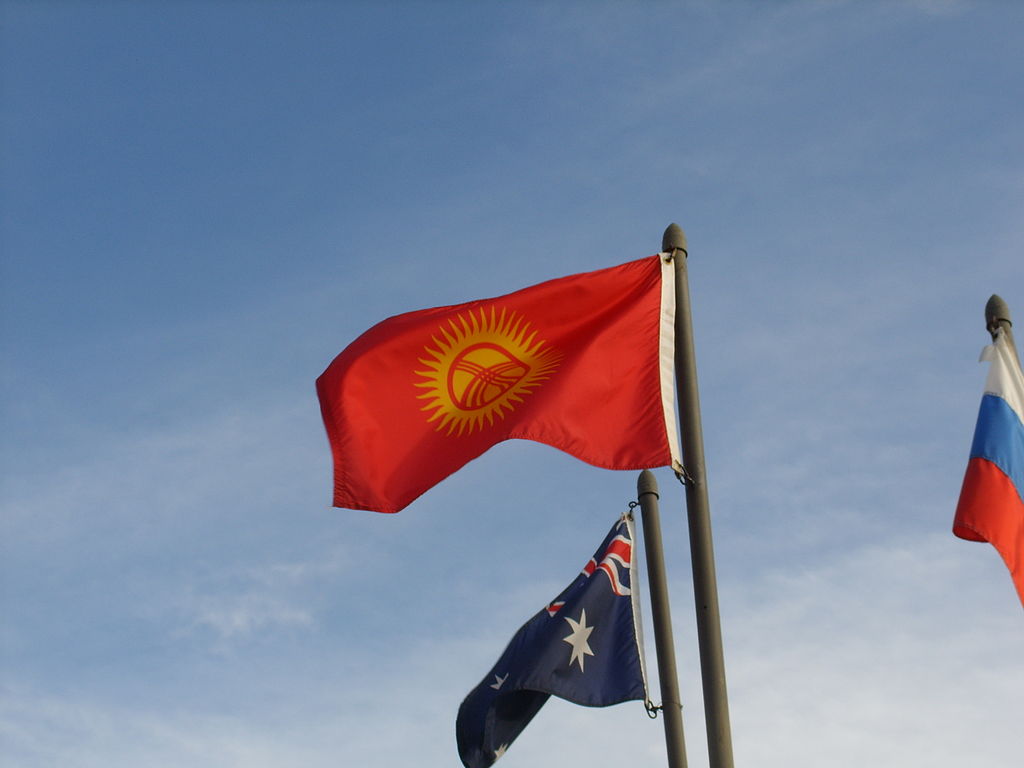Tensions have been rising in Kyrgyzstan’s capital city, Bishkek, as a result of the parliamentary elections held on October 4. Only four out of the sixteen parties running for the 120 seats available on the Supreme council met the 7% barrier making them eligible for the election. Three of these parties are considered to be pro-government and had close ties to former President Sooronbai Jeenbekov. Jeenbekov, who already faced allegations of harming the state’s democracy by suppressing opposition journalists and politicians, is once again facing allegations of harming the political integrity of the state. Now, he finds himself out of power. Opposition parties claim that Jeenbekov and his affiliated parties bought votes to sway the recent election results in their favor, prompting a series of violent and ongoing revolts.
Kyrgyzstan has a reputation for being one of the only countries in Central Asia to have a semi-democratic government. This is evidenced by the semi-free and fair elections that have been held yearly since its independence in 1991. Despite this, the country is no stranger to political unrest. Jeenbekov’s removal from power makes now three presidents to have been overthrown by revolt in the past 15 years.
Similar to previous uprisings, the current political unrest seems to be primarily driven by clan rivalries. A number of clans exist in Kyrgyzstan but they can be loosely divided into three major groups: a left-wing which is composed of seven northern and western clans, a right-wing representing the southern Adygine clan, and the Ichkilik group.
The biggest ethnic split in the country can be seen in the North-South divide that exists between the right and left wings. These regions not only differ politically, but also physically and socially with clear distinctions in the lands, populations, and lifestyles. The impact of Soviet rule can still be seen in the northern region, which is more urban and industrialized, while the south reflects more of an agrarian lifestyle with a large Uzbek population. Such distinct populations indicate regional and kinship balances of power that have been important components in Kyrgz political identity since the earliest days of independence. The significance of these political identities can be seen as early as 1992 when President Akayv systematically increased the number of northerners while decreasing the number of southerners from positions of power.
This ethnic tension is also a source of conflict between the previous and current presidents. Previous president Atambayev, a northerner, was immediately thrown in jail on corruption charges after current president Jeenbekov, a southerner, was elected, an act Atambayev’s supporters claim was a political vendetta. Many northerners claim that recent election results reflect Jeenbekov fraudulent attempts to stack the government in favor of southern authority, reflecting his own biased interests. This has instigated the series of protests and counter-protests between northerners and southerners that have rampaged the city for the past week.
Protests started peacefully on Monday, October 5, when followers of opposition parties such as United Kyrgyzstan, took to Bishkek calling for the vote to be annulled. However, the protestors were quickly met with tear gas and water cannons, prompting violent retaliation.
By Tuesday, October 6, protestors had broken into government headquarters and freed former president Almazbek Atambayev from custody where he was being held on charges of corruption. In an effort to appease the building tensions, the Central Election Commission overturned the vote and held an emergency parliament session where lawmaker Sadyr Zhaparov was temporarily elected as prime minister. However, this too was met with violence from counter-protest groups wanting adequate representation, spurring further chaos in the state and forcing Jeenbekov into hiding.
Jeenbekov inevitably gave into building pressures from civilians and officially dismissed key figures of the government including the prime minister, the head of armed forces, and the country’s security chief on October 9. Jeenbekov himself said that he would be willing to leave office once the country is “back on the path of lawfulness”, evidently showing his desire to maintain order in the country rather than hold on to any political authority.
However, the same day these claims were made, Jeenbekov declared a nationwide state of emergency set to last until October 21st, leading many to question whether he was going to try to hold onto power.
Inevitably, Jeenbekov succumbed to the ongoing political pressures and officially resigned as president on October 15, making him the third president removed from power since 2005. Jeenbekov resignation gave room for acting prime minister Sadyr Japarov to declare himself president. Lawmakers backed this decision and confirmed Japarov as president until the next election in January 2021.
While Japarov holds much public approval, his arrival to power came about through incredibly strenuous circumstances and he currently holds an immense amount of power, acting as president and prime minister, with the support of parliament to boot. The ongoing pandemic and economic crisis intensify concerns about the sudden transfer of power and place the country in a vulnerable state. Japarov and his upcoming leadership decisions will have major implications both for the next set of elections and Kyrgyzstan’s stability as a whole.
Edited by Gabriela McGuinty.
Photo credits: Tim Brauhn from Denver, USA, CC BY 2.0, via Wikimedia Commons
Emily is in her third year at McGill University majoring in Political science with minors in social entrepreneurship and international development.

